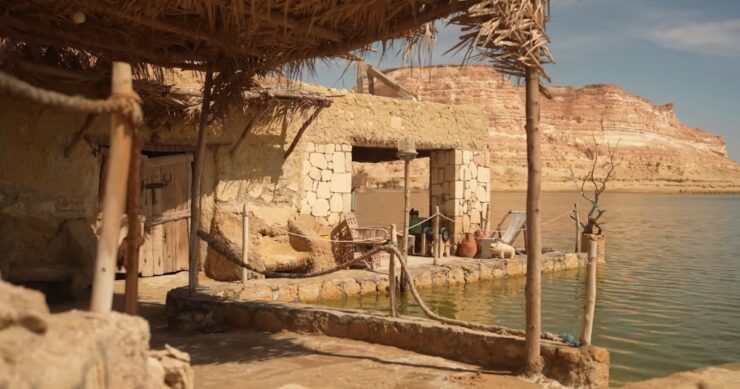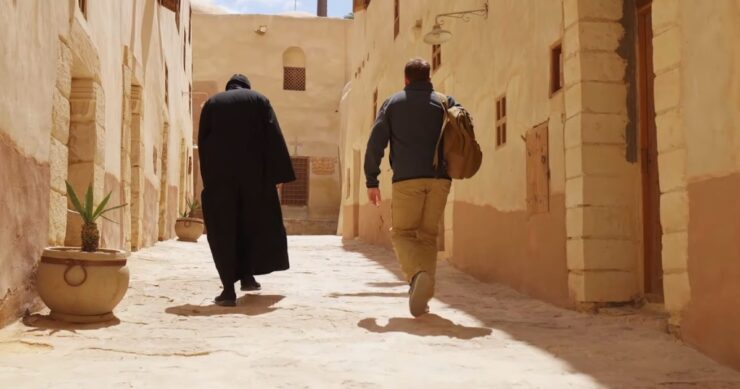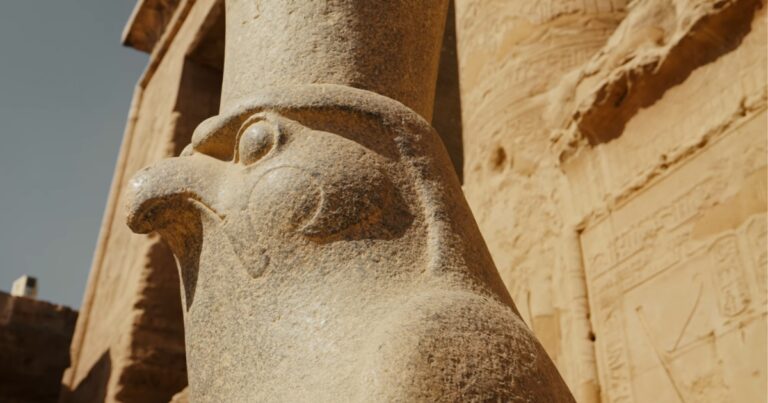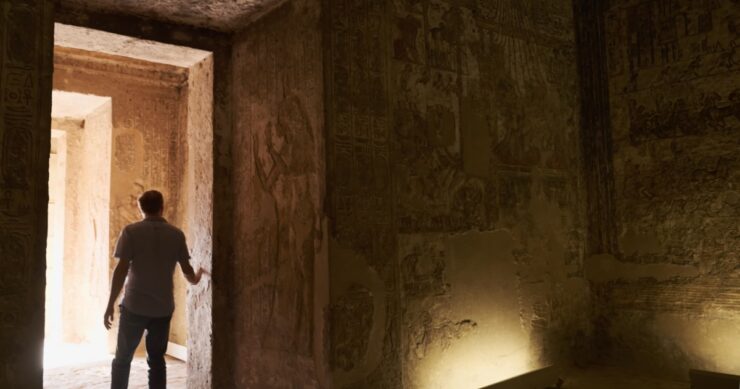Egypt, a land steeped in history and allure, is often synonymous with its Pyramids, the Sphinx, and the bustling streets of Cairo. Yet, beyond these famous landmarks lies a trove of hidden gems, each offering a unique slice of Egyptian heritage, culture, and natural beauty.
This article ventures into the heart of Egypt’s lesser-known destinations, shedding light on places where time seems to stand still and stories of the past resonate in every stone and dune.
Siwa Oasis

Nestled in the Western Desert, Siwa Oasis is a paradise amidst the harsh, unforgiving sands. Known for its hot springs, salt lakes, and unique Siwan culture, it is a world away from the typical Egyptian experience.
The Oracle Temple, once visited by Alexander the Great, and the ruins of the ancient city of Shali are must-visits. The blend of Berber traditions with the tranquil beauty of palm groves and clear springs creates an enchanting retreat.
Dahshur’s Red and Bent Pyramids
While Giza’s pyramids attract the crowds, Dahshur’s Red and Bent Pyramids offer a more tranquil, yet equally fascinating, peek into Egypt’s ancient architectural genius.
The Red Pyramid is one of Egypt’s first successful attempts at a smooth-sided pyramid, while the Bent Pyramid, with its unique shape, stands as a testament to the evolving techniques of pyramid construction.
If you are interested in visiting these pyramids, learn how Egypt Tours agencies can help you plan out your trip and ensure a beautiful adventure worth remembering. Continue reading more at https://www.luxorandaswan.com/Egypt/travel-pakages.
The Monasteries of Wadi Natrun

The Wadi Natrun valley, located in the desert between Cairo and Alexandria, is a spiritual haven, housing ancient Christian monasteries. These monasteries, some dating back to the 4th century, are not only religious landmarks but also repositories of Christian art, rare manuscripts, and early religious texts.
The serenity and historical depth of this region offer a profound insight into Egypt’s diverse religious tapestry.
Al-Qasr

In the heart of Dakhla Oasis lies Al-Qasr, an ancient Islamic town that has stood the test of time. Walking through its narrow, covered streets is like stepping back into medieval times. The town’s minaret, mud-brick houses, and the Ayyubid mosque, with its intricately carved wooden lintels and doors, tell tales of a bygone era rarely seen in modern-day Egypt.
The Temples of Esna
Often overshadowed by the grandeur of Luxor’s temples, Esna’s ancient temple, dedicated to the god Khnum, is a hidden jewel. Its beautifully preserved hypostyle hall, adorned with vibrant hieroglyphics and carvings, showcases the artistic finesse of the Ptolemaic era.
The temple, partially buried beneath the modern town, offers a unique underground exploration experience.
The Coastal Charm of Marsa Alam

Marsa Alam, once a small fishing village on the Red Sea, is now an emerging destination for those seeking pristine beaches and exceptional scuba diving experiences. Its coral reefs and diverse marine life, including dugongs and sea turtles, make it a haven for nature enthusiasts.
The tranquility of Marsa Alam provides a stark contrast to the more frequented Hurghada and Sharm El Sheikh.
The Lost City of Amarna
Amarna, the capital city built by the heretic Pharaoh Akhenaten, stands as a symbol of his revolutionary ideas in religion and art. Today, its ruins offer a glimpse into this controversial period of Egyptian history.
The site, overlooking the Nile, includes the Great Temple of the Aten, the Royal Tomb, and several other structures that reveal much about the Amarna period’s unique artistic style.
The Secluded Beauty of Fayoum
Fayoum, an oasis southwest of Cairo, is a blend of lush land, water wheels, and ancient sites. The area is known for its rich wildlife, including a variety of bird species, making it a paradise for birdwatchers. The ancient city of Karanis and the Hawara Pyramid are notable historical sites, revealing layers of Egyptian civilization from Pharaonic to Greco-Roman times.
The Island of Faiyum

Faiyum, an island oasis nestled in the middle of Lake Qarun, is a natural sanctuary. Its unique ecosystem, featuring wetlands and a diverse array of flora and fauna, offers a peaceful escape from the hustle of city life. The island’s traditional fishing practices and the nearby Petrified Forest, with its ancient tree fossils, add to its charm.
The Nubian Villages of Aswan
Aswan, known for its High Dam and the Temple of Philae, also harbors the vibrant Nubian villages of Gharb Soheil and Elephantine Island. These colorful villages, with their distinctive architecture and warm-hearted inhabitants, provide a glimpse into the rich Nubian culture.
The traditional music, art, and handicrafts reflect a cultural heritage that is both distinct and integral to the Egyptian tapestry.
Rosetta
Rosetta, a port city on the Mediterranean coast, is famous for the Rosetta Stone, which unlocked the mystery of Egyptian hieroglyphs. While the original stone is not here, the city itself is an undervalued gem.
Its rich architectural heritage, with Ottoman-style houses and traditional markets, offers a vivid snapshot of Egypt’s diverse history. The Rashid Museum and the Fort of Qaitbay are highlights, providing insights into the city’s role in Egypt’s narrative.
Abu Simbel, Temples of Ramses II
Though not entirely unknown, Abu Simbel remains an underappreciated marvel of ancient Egypt. The two massive rock temples, constructed by Ramses II, are architectural wonders, particularly noted for their colossal statues guarding the entrance.
The entire complex was relocated in a monumental UNESCO effort in the 1960s to save it from flooding caused by the Aswan Dam. The annual Sun Festival, where sunlight illuminates the inner sanctum, is a spectacular event that showcases the precision of ancient Egyptian astronomy and engineering.
The Bahariya Oasis
The Bahariya Oasis, situated in the Western Desert, is a gateway to the enigmatic White Desert, famous for its surreal, chalk-like rock formations. Beyond this lunar landscape, the oasis itself is rich in archaeological sites, including the Golden Mummies and the Temple of Alexander.
The lush palm groves and hot springs offer a serene escape, and the local culture, with its Bedouin roots, adds to the charm of this secluded paradise.
End Note
In conclusion, Egypt’s less-explored destinations are not just places on a map; they are chapters of a story waiting to be read, offering experiences that are as diverse as they are enriching.
Each hidden gem in Egypt holds a piece of history, a slice of culture, and a promise of unforgettable adventures. As travelers seek to unveil these lesser-known facets of Egypt, they not only discover new places but also unravel new narratives of an ancient land that continues to fascinate and inspire.
Related Posts:
- When is the Best Time to Visit Egypt? Insider Tips…
- Breaking News: Tori Kelly Hospitalized in Critical…
- Mushrooms Unveiled: Exploring the Benefits and a…
- AI Unveiled: Surprising 9 Things You Probably Didn't…
- Can Artificial Intelligence Forecast RNG in Slot…
- JIT Access Unveiled: Tips for Understanding this…












